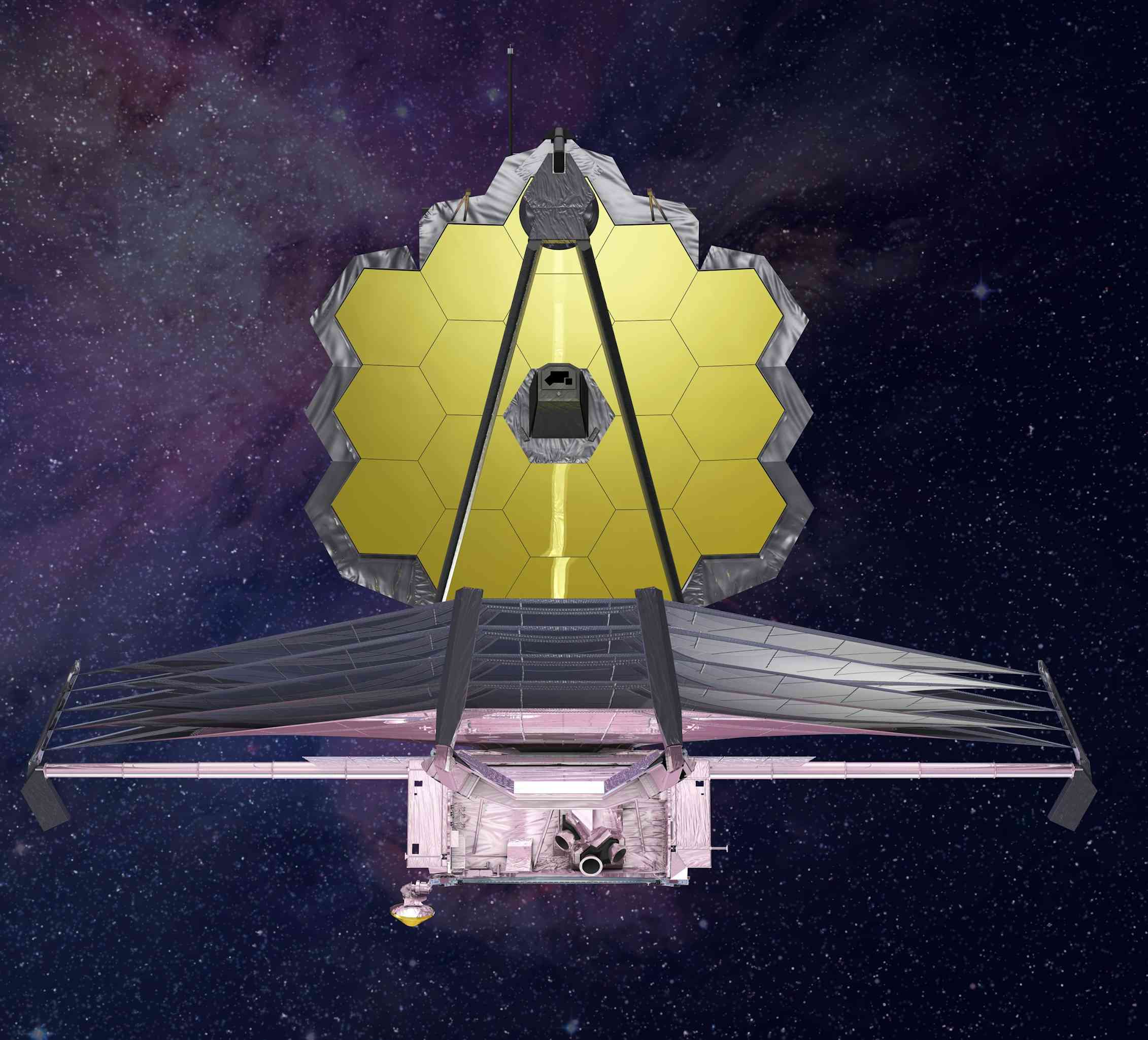Hubble tension, the mystery of the Universe's expansion, finally solved?
Follow us on Google News (click on ☆)

This illustration of the James Webb Space Telescope's front view shows its sunshield and golden mirrors.
NASA/ESA/CSA/Northrop Grumman
The James Webb Space Telescope, launched in 2021, offers unparalleled precision in observing distant stars. Thanks to its resolution four times higher than Hubble's and increased sensitivity, it can analyze individual stars in distant galaxies, thereby reducing uncertainties in distance measurements.
A team led by Wendy Freedman from the University of Chicago used combined data from the Hubble and James Webb telescopes to recalculate the Hubble constant using the second method. Their study yielded a value of 70.4 km/s/Mpc, with a margin of error of ±3%. This estimate comes closer to that obtained by the Planck satellite, 67.4 km/s/Mpc, for the first method. The discrepancy between the two methods now falls at the edge of the compatibility range.
This convergence suggests that the previously observed divergence might be due to systematic errors in earlier measurements. However, additional research is needed to confirm these findings.
Historically, the Hubble constant was introduced by Edwin Hubble in 1929, marking a major breakthrough in our understanding of the expanding Universe. Since then, refining its value has become a priority for cosmologists, as it directly influences estimates of the Universe's age and size.
The James Webb Telescope continues to play a crucial role in this quest. Its future observations, particularly in galaxy clusters like the Coma Cluster, could provide additional data to refine the Hubble constant measurement and potentially resolve the persistent tension once and for all.
In the meantime, this advancement represents a significant step toward a better understanding of the Universe and its expansion.
How do we measure the Universe's expansion?
The Universe's expansion is measured using two main methods. The first relies on analyzing the cosmic microwave background, residual light from the Big Bang. This method provides a snapshot of the Universe in its earliest moments.
The second method uses distance indicators like supernovae and red giant stars. By comparing their intrinsic brightness to their apparent brightness, scientists can estimate their distance and, by extension, the Universe's expansion rate.
These measurements require corrections, accounting for factors like cosmic dust, which alters perceived brightness. Technological advancements, such as those brought by the James Webb Telescope, significantly improve accuracy.